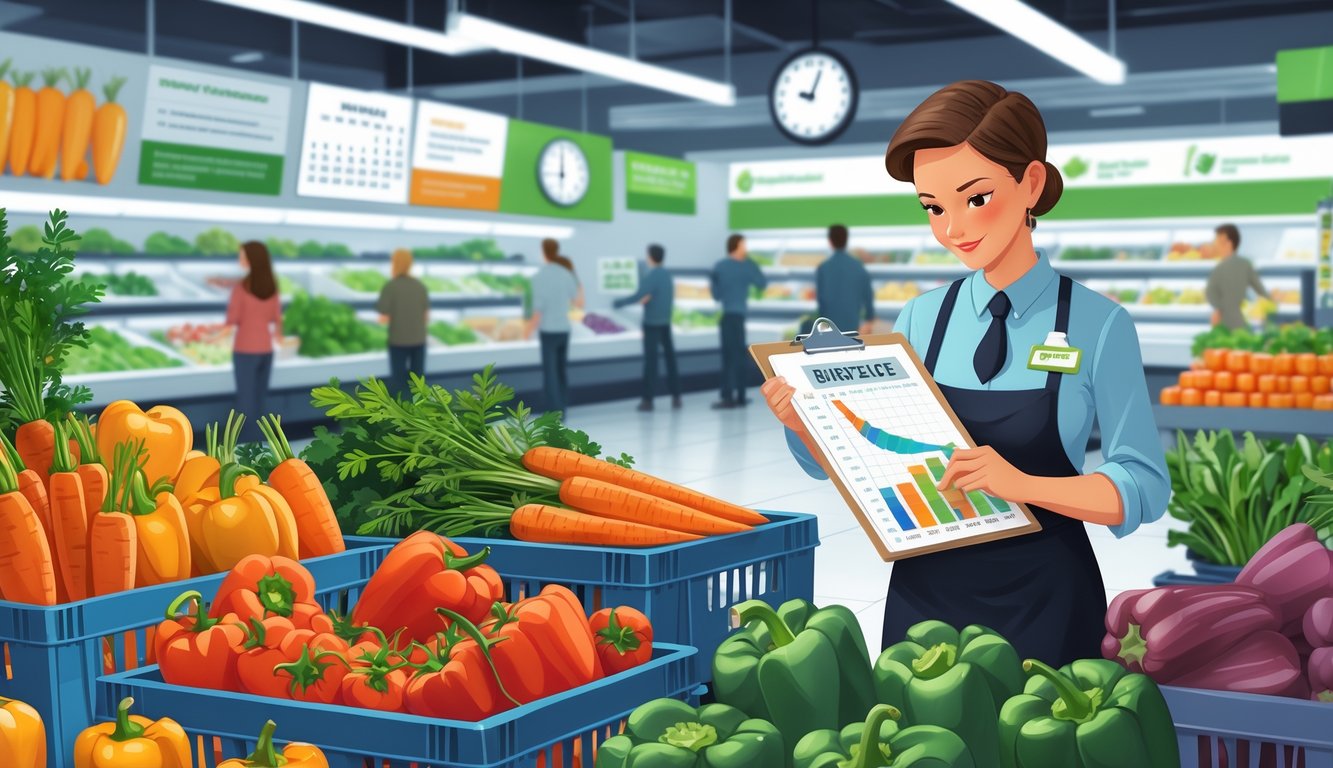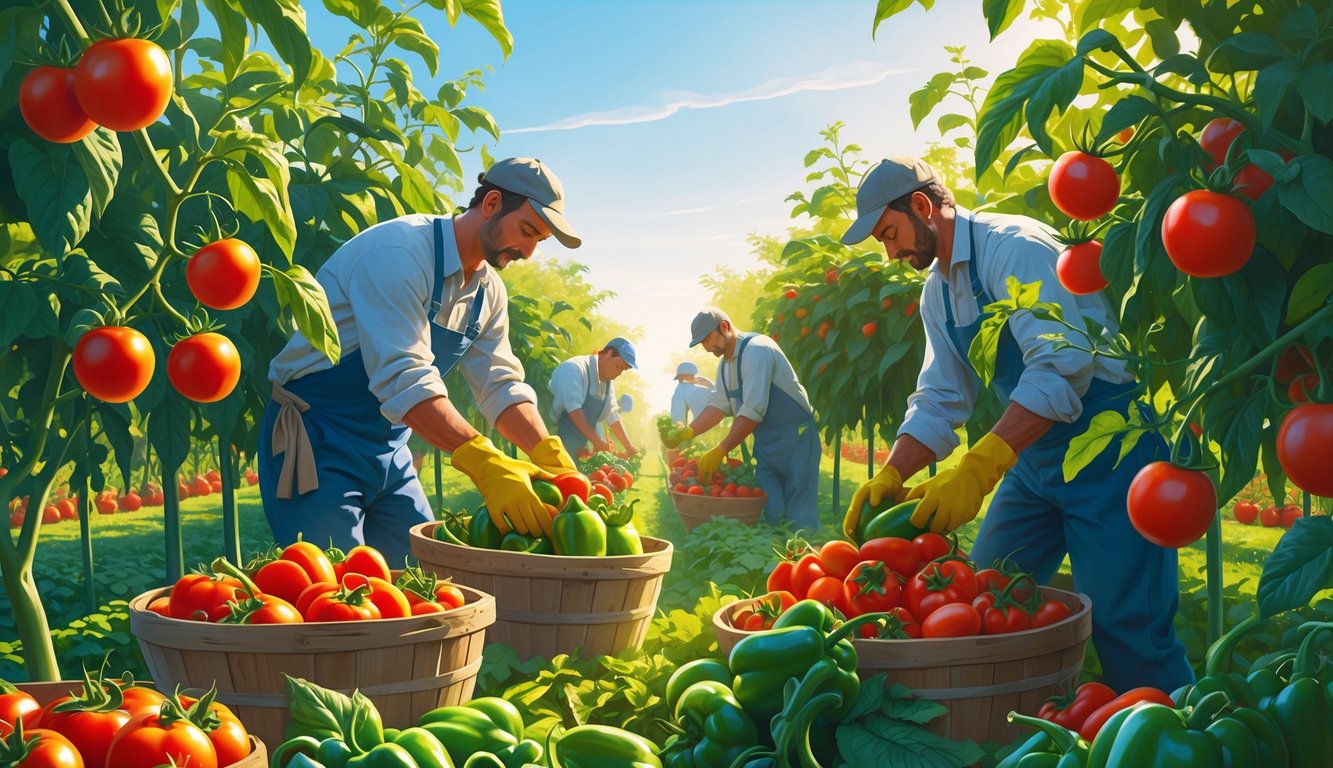
Leafy Greens Harvest Insights Grocers Rarely Share
Ever wonder how lettuce at the store never wilts, like it’s immune to time? I can’t stop thinking about it—when it was picked versus when you buy it is everything for taste and nutrition. It’s never just “lettuce,” right? Let me vent for a second.
Perfect Timing for Lettuce and Spinach
If you’ve ever yanked a romaine head on a hot afternoon, you know: regret. Lettuce hates heat. It wilts in minutes. The real move? Harvest before sunrise, when it’s still cool. Water content’s maxed out, so you get crisp, perky leaves.
Spinach acts the same. My neighbor, who’s basically a spinach evangelist, says if you don’t snip leaves while they’re still dewy, you lose flavor by noon. The data backs her up: experts say morning harvest keeps greens crisp (see here).
Nobody at the store tells you those fancy endive or cress have, like, a three-hour window before they go limp. I left a bunch on the porch once—came back to a pile of sadness. Best trick? Snip, dunk in cold water, eat, repeat. Try asking the produce guy if the chicory came in cold. Good luck.
Secrets to Crisp Kale, Swiss Chard, and Collards
Kale isn’t invincible, no matter what anyone says. Ever seen a pile of limp kale in July? Happens all the time. And why do stores put parsley or chard next to apples? Ethylene is real, people. The best kale gets cut in the early morning, when the sugars are steady and the color’s bright. A grocer in Des Moines once told me—never stash kale in warm bins, or you get instant mush.
Swiss chard is even fussier. Only the outer leaves get snipped, or the plant freaks out and stops growing. Someone from the fresh greens trade told me even chard or collards go limp if you don’t wash, dry, and chill them right away at 32-35°F (which, let’s be honest, is not what my fridge does).
Collards pretend to be tough but can taste like soap if you pick them late. Last year, I mixed them with parsley—everything turned metallic and gross. Lesson learned: keep your collards and parsley apart, or pay the price. Not that any label warns you.
Root Vegetable Harvest Tips Grocers Avoid Discussing
You ever notice how nobody at the store actually warns you about how easy it is to ruin half your root veggies before you even get them in the pot? Like, you’d think there’d be a sign: “Don’t yank these too soon, or you’ll regret it.” But nope. Pull carrots early? Bland. Wait too long? Now they’re tough and stringy, and you’re chewing on garden rope. I wish someone had just told me any of this before I tried to lever a beet out with a bent salad fork and nearly gave up on gardening.
Carrot, Beet, and Radish Best Practices
Every time I see those perfect carrot displays at the store, I just picture the disaster hiding below—cracked, stunted, sad little things, probably yanked out when the dirt was basically concrete. Seriously, you can’t just grab a shovel and go wild. I’ve diced up more than a few beets that way. You need a fork, and you’ve gotta get your hand right down at the base. If you get cocky and pull by the greens? Snap. Especially with those little round beets. Radishes? Wait too long, and they split, get all mealy, and lose their crunch. I once ripped off a dozen radish tops in one go, left all the roots stuck in the ground like some weird veggie graveyard. Oh, and nobody at Fresh Harvest Haven ever mentions how the greens rot way faster than you’d expect—slice them down to about half an inch from the crown or you’ll just speed up the mush-fest. My buddy—guy wins county fair ribbons, whatever that’s worth—swears there’s like a one-week window for sweet carrots and radishes in spring. Have you ever seen that on a grocery bag? Me neither.
Harvesting Potatoes, Sweet Potatoes, and Others
Potatoes and sweet potatoes still drive me nuts. The store potatoes look like science experiments—perfect, shiny, no idea how they do it. In my yard, it’s all about catching the foliage at the right time. As soon as those tops yellow and flop, dig them up. Wait too long? Rot streaks climb the stem and you slice into a mushy mess. I screw up at least two big ones every year. For longer storage, onions, turnips, and celeriac need to hang out in the ground until the leaves dry and drop, but if rain’s coming? Mold. Every time. My rutabagas always look like troll clubs. How do commercial growers get them smooth? Humidity sensors? Magic? Salsify, parsnips, Jerusalem artichokes—I read you’re supposed to leave them in the soil till frost. Except, apparently, every squirrel in the neighborhood knows that too. I found horseradish sprouting ten feet from where I planted it. Nobody at the store tells you those runners will come back every year unless you go full root-hunting maniac and dig up every last piece.
Harvesting Tomatoes and Peppers: What Grocers Won’t Tell You

And let’s talk about tomatoes and peppers. Ever get bland peppers from the store? Or tomatoes that taste like, I don’t know, packing peanuts? Nobody at the store explains why. Field timing isn’t just a date on the calendar, it’s a whole argument with the weather, the plant, and probably the universe. Grocers aren’t labeling their tomatoes “pink and flavorless” or warning you that your eggplant’s been trapped in a truck for a week.
Best Times for Tomatoes, Tomatillos, and Eggplants
Store labels never say that most tomatoes and tomatillos get picked at what they call the “breaker stage”—mostly green, just a blush of color. Ships great, tastes like nothing. I’ve had old-timers tell me if you think a tomato’s ready, leave it for another day. Color isn’t everything. There’s the firmness, the skin, the weird little give when you press it. See a green patch on the shoulder? Wait. Or don’t. Who knows. The Fresh Harvest Haven folks talk about the gentle squeeze test, but you’ll never hear that in the produce aisle.
Eggplants are a mystery. Grocery ones are huge and tough—probably overgrown. At home, I pick them when they’re glossy and medium-sized. Overripe? The seeds taste like aspirin. Tomatillos—people pick them stiff and green, but the husk needs to split. That’s my go-ahead. No one at the store mentions any of this. Why would they?
Getting the Most Flavor from Peppers
Those big, crunchy bell peppers? Picked green so they don’t go soft in the warehouse. Actually ripe peppers—red, orange, yellow—taste way better but spoil faster. So, yeah, the store never says, “Hey, these were picked early.” I once cornered a commercial grower and he finally admitted the best-tasting peppers sat on the plant until they hit full color and got that waxy, tense skin. Not soft, just…right. Hot peppers? The longer they sit, the hotter they get—oils concentrate. Even the Epic Gardening crew says timing is everything for flavor. Ignore anyone who says “pick when big”—that’s not it.
So now I’m staring at these jalapeños from the bin—hard, dark green, no smell. I let them color up at home, maybe get a little more flavor, but honestly, you can’t fix what’s already lost. And why do eggplants always look tired next to the peppers at the store? Is it the lighting? Am I imagining things?